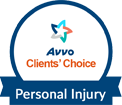California attracts tourists from within and outside the state. With attractions such as Disneyland, national parks, state parks, and the coastal areas, it is no surprise that California receives about 42 million visitors every year.
These tourists rely on local tour bus companies to transport them to and from these attractions. It is sometimes inevitable that an accident will occur.
If you are injured in a tour bus accident, you can get a legal remedy for the injuries or damages you suffer from the accident. Often, these accidents occur due to negligence of parties like the tour bus company, the employer, and the driver of the bus.
The Personal Injury Attorney Law Firm understands the laws that apply to tour bus accidents and will help you establish the cause and liability for the accident to help you in seeking compensation.
Overview of Tour Bus Accidents
Tourism is the fifth-largest industry in California, with close to 50 million annual visitors. Most of the tourists rely on tour buses from travel companies to help them get to their tourist destinations.
Most of these buses have strict schedules and move many miles in a day, increasing the risk that they might be in an accident.
Tour bus injuries affect more than 24,000 people annually in the country, and more than 300 die. These statistics include passengers in the bus, motorists, and passengers of other cars and pedestrians.
California categorizes tour buses as common carriers. This means that the parties involved with the maintenance and repair of the vehicles have a higher duty of care to prevent causing injuries to the passengers.
Since these buses are common carriers, their operators, and owners must meet the set rules and regulations. Some of these regulations include:
- The driver must inspect the bus before and after a trip to catch the common problems that might cause an accident. These problems would include issues with the brakes, and missing handrails that contribute to the safety of the vehicle. Checking these aspects before the trip can help prevent unnecessary accidents and injuries. For instance, if the driver checks beforehand that the emergency exit door is working well, it might save some lives in case of an accident.
- The driver or bus company must make regular maintenance to the vehicle to ensure it meets the current safety standards
- The driver must park the tour bus in designated zones
- The driver must load and unload passengers at designated areas, at points where the passengers are safe after alighting. The duty of care extends to the bus after the passengers alight from the tour bus.
- Employers must screen their drivers thoroughly to ensure that they are qualified and licensed to operate as commercial drivers
- The driver must obey all traffic regulations and drive carefully to prevent foreseeable harm to the passengers
- The driver must be in constant communication with the passengers reminding them to take safety measures such as keeping their heads inside the car. He or she should also inform them about the reason for a stop, the next departure time, and the next destination.
- If the passengers have any cargo, the driver must load it safely and securely. It must not prevent the driver from driving efficiently, seeing the road, obstructing passengers, or be loosely secured such that it falls on the passengers. A properly secured load can help reduce accidents and liability in case of lost or damaged cargo.
Common carriers, including tour buses, have a higher duty of care to their passengers. This means that the tour bus driver or owner must care for the passenger before and after he or she boards the vehicle.
The duty of care extends until the passengers alight from the bus into a relative area of safety. This means that you could still sue the tour bus company before or after you board the bus. For instance, if the drops you off at a poorly lit area at night, you could sue if anything happens to you.
Tour buses must also exercise reasonable care to other motorists. Therefore, they must obey all traffic regulations and yield when they should. Such drivers must also do what is reasonable to prevent an accident.
You can sue a tour bus company, driver, or employer if you are injured as a motorist or pedestrian due to the negligence of any of the parties.
Tour bus accidents usually have several common issues, including:
- Establishing the cause of the accident
- Establishing liability in the accident
- Obtaining compensation from the liable party
You can identify these issues in your case by speaking with an experienced personal injury attorney who has dealt with cases concerning common carrier liability.
Causes of Catastrophic Tour Bus Accidents
Tour bus accidents occur due to various reasons that you must establish before you can file a claim. Understanding the cause or contributing factors, you can easily pinpoint the negligent party and thus increase the chances of recovering the damages from that accident.
1. Failure to Follow Traffic Rules
The goal of traffic rules is to create order on the road. They guide motorists on the right steps to take at different points on the road. These rules include stop signals, yield signs, warnings of dangerous road conditions, and speed limits.
Failure to obey these rules often creates conflicts among motorists, some of which can be fatal. For instance, a driver who crosses the intersection without obeying the traffic lights and right of way will likely crash into oncoming cars.
Most drivers who cause a traffic accident due to failure to follow traffic laws might receive a traffic citation, which will help you in proving negligence during your case.
Following traffic rules is not reserved for tour bus drivers alone. Other motorists must also obey these rules to prevent causing crashes.
2. Exhaustion
Tour buses operate on tight schedules and involve a lot of movement, which can be exhausting to the driver. The driver has to spend a lot of physical and mental energy when controlling the vehicle. If he or she does not get sufficient rest, the chances of causing an accident are higher.
Exhaustion affects the brain’s ability to make quick decisions. It also increases the chance that the driver will be drowsy or sleep on the wheel – both of which spell disaster for everyone on the road.
3. Drunk Driving
Drunk driving is dangerous. It is illegal for bus drivers to operate the vehicle with a BAC of .04%. Alcohol impairs the driver’s ability to focus on the road, identify potential hazards, and respond to them in time.
Such problems contribute to a deadly bus accident and can lead to catastrophic injuries such as head trauma.
When an accident occurs, the police will collect a blood or breath sample of the driver to determine whether he or she was driving under the influence. Armed with such information, you can easily prove that the drunk driver was at fault.
4. Poor Maintenance of the Bus
Tour buses receive a lot of traffic and are, therefore, prone to more tear and wear. Maintenance of these buses must follow both state and federal regulations to ensure that:
- The parts necessary for the safety and efficiency of the vehicle are working properly
- The emergency doors and emergency exits are working properly (federal regulations require that these be inspected every 90 days)
- An authorized person must inspect the vehicle to ensure that the bus is well lubricated and that any problems and leaks are fixed promptly
- The driver must safely operate the vehicle to prevent unnecessary wear and tear to the vehicle
In addition to regular maintenance, the driver must inspect the vehicle before and after every trip. This way, he or she can identify potential problems and have them fixed before the next trip.
Employers, bus owners, or companies that fail to maintain their tour buses as required by law will be liable for the damages that arise due to the failure to maintain the vehicle.
5. Design Defects
Manufacturers of tour buses also have a role to play in ensuring that tour buses are safe to use. They must create vehicles that meet the minimum state and federal regulations.
They must also test new products before releasing them into the market. The common bus defects on buses include:
- Structural flaws ( for instance, a poorly designed roof that cannot handle a rollover accident)
- Brake failure
- Electrical problems
- Seats that detach from the bus during an accident
- Missing seat belts
If a design defect causes a bus accident, then you can sue the product manufacturer, distributor, or seller under California’s product liability laws.
6. Poor Road Conditions
Roads also contribute to the safety of a bus. Poor road conditions such as potholes, wheel ruts, missing guardrails, dangerous curves, and construction zones increase the likelihood of an accident occurring even if the driver is careful.
These road conditions can be made worse by the weather, including storms or rainfall. If the road also has confusing road signs, the chances of getting into an accident increase.
Liability for poor road conditions can vary depending on the responsibility of maintaining the road. If you were injured in a tour bus accident, your attorney would guide you in establishing liability and filing the claim in time, especially if you are dealing with the government or protected parties.
Common Catastrophic Injuries from Tour Bus Accidents
The severity of injuries from tour bus accidents varies depending on the type of accident, the speed of the bus, the bus design, and the vehicles involved. These accidents can lead to minor injuries such as bruises or severe injuries such as burns and traumatic brain injuries.
These injuries will affect you substantially in the present and future. The common catastrophic injuries from tour bus accidents include:
1. Traumatic Brain Injuries
Traumatic brain injuries are among the most severe injuries from bus accidents. They are common where the bus collided with a larger truck or rolls over. The passengers of a smaller car that collides with a tour bus are also likely to suffer traumatic brain injuries.
Traumatic brain injuries are so severe that about 50% die within hours of the injury. The remaining may live with long-term effects and require constant medication to stay stable.
The signs and symptoms of traumatic brain injuries vary depending on the severity of the injury. They may include:
- Headaches
- Prolonged periods of unconsciousness
- Sensitivity to light
- Disorientation
- Insomnia or too much sleep
- Convulsions
- Slurred speech
- Coma
While these are not all the symptoms, you must take the victim to an emergency unit if you notice them. Recovery from traumatic brain injury depends on the timing of the response and medical care.
If the person stays for too long without treatment, he or she is likely to die or develop complications such as severe brain damage.
The symptoms of traumatic brain injury do not end at recovery. You might experience one or more of these permanent conditions:
- An increased risk of developing dementia, Parkinson’s and Alzheimer’s
- Post-traumatic epilepsy
- Severe and persistent headaches or migraines
- Problems with memory and concentration
- Difficulties in physical mobility
- Sleep problems
- Personality changes
- Additional complications such as depression and anxiety
You might also need constant medical care in the future to deal with the permanent effects of the condition.
2. Head Injuries
Head injuries are those that result from blows to the head. Traumatic brain injuries are a type of head injury, but with more severe symptoms. Head injuries affect the brain (as in traumatic brain injury), the scalp, and the skull.
Head injuries can be either open or closed, depending on whether the injury penetrates the skull. Injuries that break through the skull are open injuries.
The severity of the symptoms will depend on the type of injury. The common injuries include:
- Edema
- Concussions
- Hematomas
- Hemorrhage
- Skull fracture
- Sheer injuries
The symptoms of head injury depend on the severity and location of the injury. Minor head injuries cause symptoms such as headaches, lightheadedness, mild confusion, ringing in the ears, and a spinning sensation.
The symptoms worsen with severe head injuries. They might include loss of consciousness, vomiting, problems with balance and coordination, seizures, problems with focusing the eyes, a headache that gets worse, loss of memory, mood changes, and oozing a clear fluid from the nose or ears.
Head injuries must be treated promptly regardless of their severity. However, the victim needs emergency medical care if he or she loses consciousness, is disoriented or confused.
3. Severe Burns
Burns in tour bus accidents are common if fuel leaks or the bus catches fire. This could be because the bus transported hazardous materials, or the engine catches fire.
Burns vary in their severity depending on the layers of skin that are affected. Mild or first-degree burns affect the top layer of the skin and can heal at home. Second-degree burns are more severe but less penetrating than third-degree burns.
Third-degree burns can be so severe that the damage reaches your nerves. These burns often require longer periods of treatment. The treatment might include skin grafting and therapy. In some cases, you might need reconstructive plastic surgery to restore various parts of the body that the burns disfigure.
Other catastrophic injuries include spinal injuries, fractures, amputations, neck injuries, organ damages, internal injuries, and paralysis.
Filing a Claim after a Tour Bus Accident
The first step in filing a claim is by establishing the party against whom you are filing. Liability in tour bus accidents depends on the cause of the accidents and actions in which the defendant(s) was engaged in when the accident occurred.
Liability also varies depending on the duty of care each party has. Tour bus drivers, manufacturers, owners, and employers have a higher duty of care due to the inherent risk of damage and injury a tour bus can cause.
Some of the liable parties you can sue in a tour bus accident include:
- The employer of the driver
- The driver (especially if the company uses independent contractors)
- Commercial bus operators
- Tour bus company
- Bus manufacturer
- A government agency required to maintain the road
You should also consult a personal injury attorney to help you through the process of filing the claim. You will send a notice letter to the liable party(s). Once the defendant responds, you can begin the negotiation process.
However, if the defendant does not respond, you can file a lawsuit in civil court. Your attorney will help you with filling out the necessary paperwork and ensuring that you file within the statute of limitations.
The statute of limitations on tour bus injury lawsuits determines the timeline within which you can file for a claim. The time you file depends on the extent of the injuries, your recovery, and if you are working with an attorney. However, you must file within the statute of limitations, which is usually two years since the date of the injury.
You must speak to an international attorney if you are an international tourist injured in California.
Your attorney might also give you an estimate of how much your case might be worth. With the estimate, you are better placed to negotiate a value that compensates you for your injuries.
The compensation you receive will cover different damages, including:
- The medical costs you incur from the time of the accident to the time you recover from the injuries. Most injuries from tour bus accidents might require extensive stays at the hospital as well as expensive medical procedures to facilitate recovery. These costs are straining your finances, and you, therefore, deserve compensation from the negligent party. Medical costs might also include the possible future expenses you might have to spend to treat the injuries. Some of the costs you can recover include transportation, treatment, medication, therapy, and rehabilitation. You will need to present receipts for the costs you incurred. If you are seeking future medical costs, you might have to present the testimony of an expert witness.
- You can also recover the wages you lose if you have to miss work for your injuries. Lost wages usually compensate you on the theory that you would still go to work if you were not injured in the accident. The compensation will cover the bonuses, overtime, wages, and salaries you miss due to the injury. You can also recover your lost earning potential, which is the difference between your pre-accident and post-accident wages. Another recovery is lost future earnings for the earnings you could have earned without the injury.
- The at-fault party must also compensate you for the pain and suffering you experience due to the loss of a loved one or the injuries you suffer due to a tour bus accident. These damages are usually dependent on the type of injury, the evidence of your emotional and physical pain or suffering, the role you played before the accident, and notes from your therapist. In most cases, catastrophic injuries and death cause more pain, suffering, and are therefore likely to attract higher compensation.
- You can also recover wrongful death damages if a loved one dies from the accident or the resulting injuries. You must file a claim for wrongful death within two years after the date of death. The defendant will compensate you for the medical costs, funeral and burial expenses, and pain and suffering.
The final value of your settlement will depend on several factors, including your willingness to settle if you use an attorney, the facts of the case, and the evidence you present to support your claim.
Find a Tour Bus Accident Attorney Near Me
No one expects to get into an accident while touring California. However, accidents happen, and sometimes, they leave us with a lifetime of physical and emotional scars. If you are injured in a tour bus accident, you can pursue a claim to recover some of the damages.
While you cannot replace your well-being or a life with money, it can ease your way through the current and future costs of treatment and give you enough time to adjust to your new circumstances.
The Personal Injury Attorney Law Firm works hard to ensure that you identify the liable party, and are compensated for any losses you suffer. Call us today at 619-625-8707 for a free review of your case.
 800-492-6718
800-492-6718







